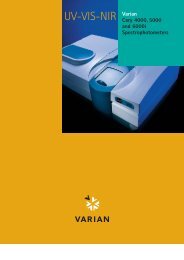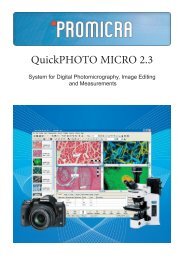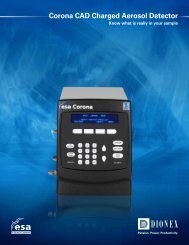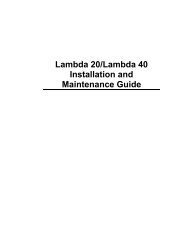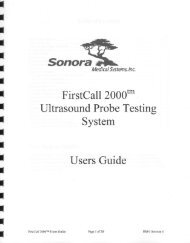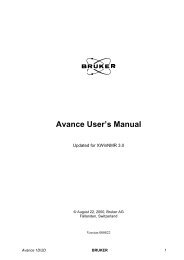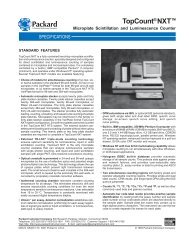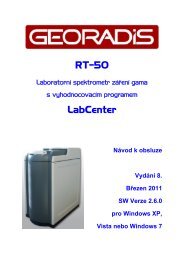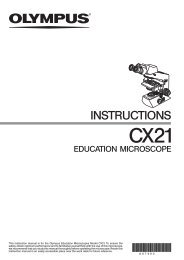HR-33T Dew Point Microvoltmeter Instruction/Service Manual ...
HR-33T Dew Point Microvoltmeter Instruction/Service Manual ...
HR-33T Dew Point Microvoltmeter Instruction/Service Manual ...
Create successful ePaper yourself
Turn your PDF publications into a flip-book with our unique Google optimized e-Paper software.
SECTION 3 – ADDITIONAL OPERATING INFORMATIONThe measurement of water potential using the dew point method is relatively straightforward and eliminates errorsthat might otherwise occur in reading the “plateau” signal from a thermocouple using the wet bulb/dry bulbtemperature comparison, or psychrometric method. Nevertheless, while the resulting output from the dew pointmeter is less subject to interpretive evaluation, the electronic process by which this output is derived from thethermocouple is somewhat more involved than with the psychrometric method. It is therefore recommended thatthe operator familiarize himself with the principles employed to obtain the dew point reading, as reviewed hereand in Section 4, Theory of Operation, in order that he will have a better understanding of the overall operationof the instrument and the results obtained. Inherent limitations in the electronic switching circuitry prevent theinstrument from being used in the dew point mode for water potential readings between zero and -1 bar(approximately 0.75 µvolts).3.1 – A v Set AdjustmentThe dew point method requires that the electronic gain of the duty cycle control circuitry be matched to the coolingcoefficient (A v ) of the thermocouple being used. This operation is easily performed using the procedure inParagraph 2.1, step 2, which allows the numerical value of A v to be read on the meter. The alternative proceduredescribed in Paragraph 2.3 may also be used. This gain-matching procedure is essential, since it ensures theenergy-balance condition that will cause the junction temperature to converge to the dew point. If, during thematching procedure, A v is set so that the meter drifts downward, then while a dew point reading with a wetthermocouple is being taken, water slowly evaporates from the junction. Conversely, if A v is such that the meterdrifts upward, then the junction will slowly accumulate water. In other words, failure to correctly adjust A v SETto match the A v of the thermocouple being used will result in the thermocouple being held at a temperature slightlyabove or slightly below the dew point. If the junction gradually loses its water until it is dry, then the reading willbecome meaningless and decay toward zero.The cooling coefficient determines the ultimate limit of the thermocouple’s range in measuring water potentialsince it represents the maximum temperature depression that can be reached by the junction through Peltiercooling. If the dew point is below this temperature, no measurement can be made in the dew point mode sinceit will not be possible to condense water from the sample onto the junction.For example, if a given junction has A v = 50 µvolts, the lowest potential that can be measured by the junction willbe50 µvolts-0.75 µvolts bar -1= -66.6 barsUsing the psychrometric method, this same junction would produce a maximum signal of approximately 31µvolts. 1Wescor junctions typically exhibit cooling coefficients of 50 to 80 µvolts, with some units as low as 40 µvolts oras high as 90 µvolts. 21Researchers have reported measurements as low as -3000 bars using a sample exchangetechnique in a Wescor Sample Chamber, but this technique can only be employed in conjunction with thepsychrometric method.2Wescor Soil Psychrometers are individually tested and labeled for cooling coefficient, A v . Astrip chart recording showing the psychrometric response to a 0.55 molal NaCl calibration solution isincluded with each sensor.13



